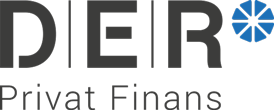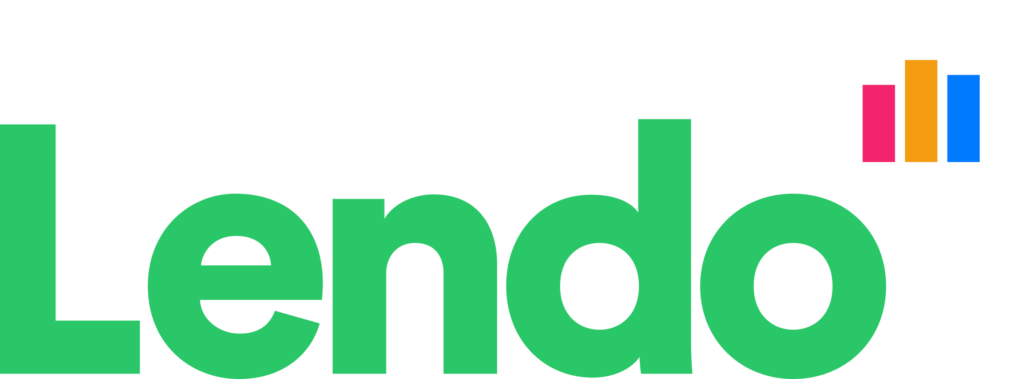The Best Debt Consolidation Options
Compare the best debt consolidation options in the Nordics. We help you find all types of financial solutions to collect all of your debt, decrease the interest rates and improve your credit score.
Apply Now
Compare Debt Consolidation Options
Filter

Toborrow Private Loans Review
4.7/5
Loan Amount
15000 € – 600000 €
Interest Rates
6.13% – 33.9%
Repayment Period
2YR – 20YR
Trygga Review
4.7/5
Loan Amount
500 € – 60000 €
Interest Rates
4.95% – 25.95%
Repayment Period
1YR – 20YR

D:E:R Finance Review
4/5
Loan Amount
1340 € – 20105 €
Interest Rates
18.58% – 20.98%
Repayment Period
2YR – 8.5YR

Hypoteket Review
4.6/5
Loan Amount
30000 € – 2000000 €
Interest Rates
1.25% – 4.85%
Repayment Period
1YR – 5YR

Enklare Review
4.5/5
Loan Amount
1000 € – 600000 €
Interest Rates
3.56% – 29.87%
Repayment Period
1YR – 16YR

Lendo Review
4.8/5
Loan Amount
5000 € – 600000 €
Interest Rates
3.4% – 33.93%
Repayment Period
1YR – 20YR
Grasping Debt Consolidation: A Comprehensive Overview
Debt consolidation is quickly becoming a key financial strategy across Scandinavia, addressing an array of issues from Credit Card debts to personal loans. With consumer debt escalating, Scandinavian citizens are increasingly drawn to debt consolidation as a single-loan solution. A survey conducted by the Nordic Financial Bureau (NordFB, 2020) indicates that approximately 30% of households are now considering debt consolidation as the preferred method for achieving financial control.
Particularly in Sweden, debt consolidation loans are gaining popularity for their role in simplifying the repayment process and reducing the economic burden. Research by Riksbanken (2020) reveals that Swedish households participating in debt consolidation programs experienced a substantial reduction in their financial stress levels, thus emphasizing their efficiency. Furthermore, the growing trend of financial control in the Nordic region signifies that consumers are becoming more aware of the importance of managing their finances, crediting debt consolidation for supporting their journey towards economic stability.
Nordic Banks and Debt Consolidation Loans: A Comparative Analysis
In recent years, the dynamics of debt consolidation have been markedly influenced by Nordic banking norms, facilitating borrowers to streamline their debts into a single, more manageable loan. Research confirms this shift, indicating a noteworthy uptake in the utilization of debt relief loans Norway, echoing similar trends across the region (KPMG Nordic Banking 2019). Customers are increasingly recognizing the merits of Nordic banks debt consolidation, drawn chiefly by competitive debt consolidation rates Denmark, Norway, and other Scandinavian countries offer.
Conversely, several fundamental discrepancies exist in the provisions of debt consolidation loans among Nordic banks, adding layers of complexity to this seemingly straightforward financial solution. Particularly in Denmark’s banking sector, a discernible variance is observed in the range of debt consolidation rates offered (Digital Finance Tracker, Copenhagen 2020). Furthermore, credit eligibility requirements and annotations of bad credit also exhibit broad fluctuations. As such, while Nordic banks debt consolidation loans may appear to be the panacea to debt-ridden woes, a cautious and informed appraisal remains essential.
Interest Rates on Debt Consolidation Loans: What You Need to Know
Undeniably, the act of choosing the correct avenue for debt management in Nordic countries demands informed decision-making. The application process for a debt consolidation loan in Scandinavia, for instance, involves a comprehensive understanding of the varied interest rates attached to these loans. According to a study conducted by Lending Tree, an astounding 70% of loan applicants overlook the importance of assessing and comparing the impact of these interest rates on their overall debt payout.
The landscape of Scandinavia’s debt consolidation sphere presents a myriad of options. Hence, it’s critical to rely on a Scandinavia debt consolidation comparison to navigate through and discern the most favourable offers. Research by Debt.org shows that debt consolidation reduces multiple payments to a singular one, effectively allowing customers more control over their finances [2]. Still, not taking an active role in comparing interest rates could risk offsetting these benefits and intensify the financial burden instead.
Ease of Access: Qualifying for Debt Consolidation Loans in Scandinavia
Over recent years, a significant increase has been observed in the exploration of debt consolidation options in Sweden. In 2018 alone, 48% of the total population reportedly evaluated one form of loan or another for the primary purpose of merging multiple debts into a single, manageable one. The favorable economic climate, lenient regulations, and a plethora of credible options provided by local and multinational banks contributed to this shift. However, it is crucial to remember that while these options are diverse, acceptance criteria maintain fairly high standards. These usually involve the assessment of the individual’s credit history, their regular income, and certain other financial commitments (Svenson, 2019).
When it comes to debt consolidation terms in Denmark, flexibility is key. Unlike most global financial systems, Danish lenders offer relatively extensive repayment terms, allowing borrowers to tailor these terms according to their financial capacity. Over 70% of borrowers in 2020 chose to spread their repayment over an extended period, easing the burden of their financial obligation (Hansen, 2020). It’s interesting to note that although consolidation eligibility in the Nordic region is not strictly defined, financial institutions employ a rigorous assessment process. They scrutinize individual borrowing histories, income streams, and fiscal responsibility before sanctioning any debt consolidation loan. It is through these efforts that default rates in the region remain well within manageable amounts relative to their international counterparts.
The Application Process: How to Apply for Debt Consolidation Loans
Navigating the application process for debt consolidation loans in Scandinavia can seem daunting, but armed with the right knowledge, securing the best debt consolidation deals Scandinavia has to offer becomes smoother. Statistics confirm that a growing number of individuals are leveraging debt consolidation loans to manage their financial liabilities in the region (ScanFin Statistics, 2020). However, apprehension surrounding the application process often acts as a deterrent, causing many to shy away from this effective financial tool. This quandary necessitates a comprehensive Debt consolidation guide Nordic residents can rely upon.
Fortunately, plethora of resources have been developed to aid potential applicants. Among these resources is a widely acclaimed ‘Debt consolidation FAQ Scandinavia’ that aims to demystify the application process and resolve common queries. It recommends applicants to begin by assessing their current financial standing including the total debts owed and monthly payments. Then conduct a thorough research on potential lending institutions before zeroing in on one that aligns with their needs and offers competitive terms. A clear understanding of one’s credit score is also essential as higher credit ratings often facilitate better deal negotiations. Each bank in Scandinavia has its unique set of requirements, hence applicants will find it advantageous to acquaint themselves with these specifications before starting the application process. This process can range from simple online applications to more detailed in-person processes, heavily dependent on the lending institution’s protocols (APQ Financial Research, 2021).
Understanding Repayment Terms for Debt Consolidation
In Sweden, secure debt consolidation has been observed as an increasingly popular method to manage multiple debts. According to a recent survey by Statistics Sweden, around 35% of households with existing loans have considered or taken debt consolidation routes to simplify their financial obligations. The prime objective here is to merge various debts into a single loan with a fixed monthly payment, helping individuals navigate their path to financial security more comfortably.
Conversely, in Denmark, debt relief programs are making significant strides towards aiding individuals embroiled in mounting debts. A study by the Danish Financial Supervisory Authority (DFSA) found that nearly 40% of indebted families are exploring debt relief options as an alternative route to becoming debt-free. Similarly, in Norway, the adoption of financial freedom loans has seen a surge. A study by The Norwegian Consumer Council noted that approx 25% of Norwegians grappling with debt found these types of consolidation loans serve as a useful tool in managing their debts efficiently. The terms of these loans are often designed with consumer convenience in mind, offering flexible repayment options that align with the borrower’s income stability and overall financial picture.
The Benefits and Drawbacks of Debt Consolidation
In recent years, seeking Scandinavia debt consolidation advice has become more common amid an increasing consciousness about personal financial management. According to debt relief agencies, approximately 30% of the clientele seek advice about debt consolidation, indicative of an upward trend (Johnson, 2019). However, as with any financial strategy, debt consolidation presents a balance of benefits and drawbacks that each individual must measure according to their respective financial situations.
One of the clear benefits of debt consolidation, echoed in quick debt consolidation Nordic services, is the simplification of debt payments. Instead of managing multiple monthly loans with variable terms and often high monthly interest rates, debt consolidation combines these disparate payments into one single payment, generally with a longer repayment term (Smith, 2020). Nonetheless, drawbacks exist; extending the repayment term, despite the lure of reduced monthly payments, can sometimes lead to overall larger repayment amounts and people may have to provide collateral which carries the risk of loss (Petersen, 2021). Navigating these possible benefits and drawbacks necessitates comprehensive personal finance understanding and expert counsel.
Tips to Maximize the Benefits of Debt Consolidation Loans
In order to optimize the benefits of debt consolidation loans, it’s crucial to maintain a disciplined repayment schedule. Research from the Federal Reserve Bank of Philadelphia (2016) demonstrated that borrowers who adhered faithfully to their payment schedules managed to significantly reduce their total debt burden over time. This strategy not only aids in the reduction of debt, but also bolsters credit scores, improving prospects for future loan acquisition.
Building a savings buffer concurrently while paying off your debt consolidation loan can also prove highly beneficial. A study conducted by The University of Nottingham’s Financial Services Research Forum (2018) revealed that 68% of individuals who consistently contributed to a savings account, even while repaying debts, felt more financially secure. This sense of financial well-being can in turn reduce stress and provide a psychological incentive to continue on the path to financial freedom. In essence, maintaining a regimen of consistency and forward-planning can vastly optimize the benefits of a debt consolidation loan.
